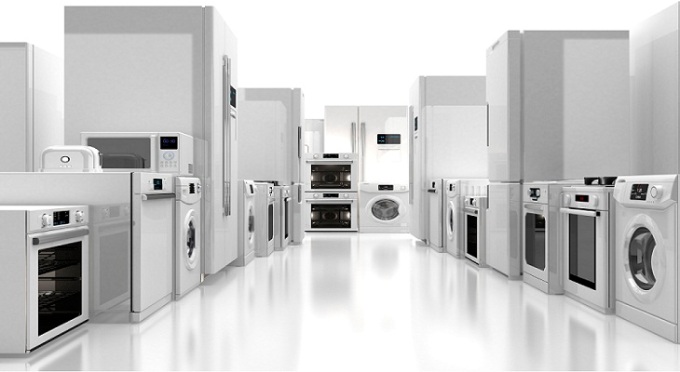Asian mobile broadband market continues to grow strongly
With 3.9 billion mobile subscribers and over 50% of the mobile subscribers in the world, spread across a diverse range of markets, the region is already rapidly advancing in the adoption of mobile broadband services. Mobile broadband as a proportion of the total Asian mobile broadband subscriber base, has increased from 2% in 2008 to 18% in 2013, 27% in 2014, 33% in 2015 and 37% in 2016. Thus mobile broadband subscribers now account for over one third of all mobile subscribers in Asia.
With 3.9 billion mobile subscribers and over 50% of the mobile subscribers in the world, spread across a diverse range of markets, the region is already rapidly advancing in the adoption of mobile broadband services. Mobile broadband as a proportion of the total Asian mobile broadband subscriber base, has increased from 2% in 2008 to 18% in 2013, 27% in 2014, 33% in 2015 and 37% in 2016. Thus mobile broadband subscribers now account for over one third of all mobile subscribers in Asia.
Growth across the region in high speed access to the internet by means of mobile broadband services has been largely driven by highly competitive markets combined with the preparedness of the customer to embrace new generation mobile technologies. With 3G, 3G+ and 4G platforms extensively covering the region, mobile broadband services have already become well established. The rapid take up has been underpinned by increasingly cheaper smartphone prices and lower airtime tariffs combining to support even wider adoption.
A major shift from mobile voice to mobile data continues across most markets in Asia. The more highly developed markets in the region, such as Japan, South Korea, Hong Kong, Singapore and Taiwan, have seen their mobile networks strongly driven by mobile data services. They have positioned themselves well to exploit mobile data and broadband wireless opportunities and lead the rest of the region into the next generations of mobile applications.

The mobile broadband subscriber base across all of Asia continues to grow strongly. The total number of mobile broadband subscribers has increased from 1.12 billion in 2014 to 1.41 billion in 2015 and 1.6 billion in 2016. Although the rate of increase of mobile broadband subscribers has subsided as the initial rapid rollout of services has slowed down, the growth rate is still reasonably strong, implying that there is still significant growth opportunity left in the market over the next five years to 2021, especially in the less developed Asian markets that are still predominately dependant on voice networks for mobile services.
MOBILE BROADBAND
With the two mobile operators, Dhiraagu and Wataniya, launching 3G+ offerings in 2009/2010, there has been rapid expansion of mobile broadband services in the Maldives. By mid-2015 mobile broadband dominated the internet market in terms of subscriber numbers and growth rate.
MOBILE INFRASTRUCTURE Digital networks
3G
The mobile operator Wataniya launched a commercial 3G network in 2008. The company also soft launched a 3.5G High-Speed Packet Access (HSPA) network. It progressively offered additional new generation services including Wataniya Mobile Broadband, Wataniya Mobile Video Surveillance and Wataniya Mobile TV services. The ‘Wataniya Broadband (3G+)’ service was launched in 2009.
3G
The mobile operator Wataniya launched a commercial 3G network in 2008. The company also soft launched a 3.5G High-Speed Packet Access (HSPA) network. It progressively offered additional new generation services including Wataniya Mobile Broadband, Wataniya Mobile Video Surveillance and Wataniya Mobile TV services. The ‘Wataniya Broadband (3G+)’ service was launched in 2009.
After Wataniya successfully transitioned to the Ooredoo brand in 2013, the operator made significant strides. By September 2013 Ooredoo Maldives had extended its 3.5G HSPA+ network to the island of Kaafu Dhiffushi in line with the network modernisation plan launched in July. The HSPA+ network now covers about of the population.
Dhiraagu launched its 3G service, branded ‘3G plus’, in 2010, and quickly provided coverage across a significant proportion of the Maldives.
Dhiraagu had expanded coverage of its 3G network to all inhabited islands by the end of 2015.
LTE
The two mobile operators have made good progress in expanding their LTE services. Dhiraagu launched LTE using spectrum in the 1800MHz band in October 2014, and by January 2015 the service was available in the island of Fuvahmulah and Addu City, the country’s second largest city. In addition to these two new locations, network coverage extended to Malé City, Villingili, Hulhumale’, Ibrahim Nasir International Airport, Villingilli, Thinadhoo, Kulhudhufushi, Naifaru. In April 2016 LTE services were extended to the island of Dhidhdhoo. By August 2016 the operator’s LTE network provided population coverage.
The network initially supported download speeds of up to s, with customers experiencing average data rates of between s and s. In late 2015 Dhiraagu launched an LTE-Advanced (LTE-A) network using carrier aggregation (CA) technology (utilising its concessions in the 1800MHz and 2600MHz bands), which improved download speeds to /s downlink and s uplink.
For more information on the market research report please refer to the below link:
Contact:
Ken Research
Ankur Gupta, Head Marketing & Communications
query@kenresearch.com
+91-124-4230204
Ken Research
Ankur Gupta, Head Marketing & Communications
query@kenresearch.com
+91-124-4230204




